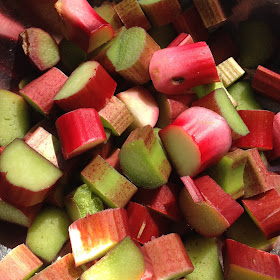We took in Kiln, a lovely wedding, St John (my all time favourite) A Wong, Brunswick House, Noble Rot, Pop Brixton and Black Axe Mangal... all in the name of research you understand, I took a lot of ideas home. I won't be adding up the receipts.
I have been getting my salmon from the Grainger Market at Lindsey's recently; they get it from Wester Ross, a salmon farm in the sea lochs of North West Scotland.
Salmon farming is a contentious subject and one that I have read frankly disgusting things about, I wouldn't buy salmon from the supermarket anymore, nor meat to be honest. So apart from eating wild salmon that isn't always available, I have been looking for sources and information that I trust. This is an independent operation that uses no antibiotics or chemicals, rears their fish by hand and gives them space and clear water to grow in without growth promoters or supplements.
I'm always looking to find out more however, about where my food comes from and the life it has had be it fish, fowl or fennel...
This works best with a big piece of fish, preferably a whole side, which will set you back about £35. I'm thinking Christmas here, as once cured it keeps well in the fridge and you can cut slivers off as required for canapés, starters and unexpected guests at any time.
Check over the salmon gently with your fingers and remove any bones with a pair of tweezers, then cut your piece of fish into equal length halves.
In a large bowl combine 300g caster sugar, 300g maldon sea salt, 15g black peppercorns crushed in a pestle and mortar, a roughly chopped bunch of dill and 2 peeled then grated beetroots. Give everything a good mix.
You will need a container that the salmon fits quite snugly in, I use a tupperware. Add about a quarter of the mix to the base, then one piece of salmon skin side down, then add about two thirds of the remaining mix and spread it over the salmon, add the next piece of salmon, skin side up, like a sandwich, then top with the remaining mix. Then you need to weigh it down, I usually slot in another tupperware and fill it with tins, or use a plate with something heavy on top... Then pop in the fridge.
If you are using large pieces I would cure it for about 5 days, turning both the pieces of salmon over daily; smaller pieces will be ready in 3 days. When it is ready take it out and brush off the mix, much of which will have turned to liquid and rinse under cold water, then dry thoroughly with paper towels. You will notice how much it has firmed up as it has cured, shedding its water and absorbing flavour. As you do this more you will learn whether you prefer the firm very cured bits at the edge or the softer lightly cured almost sashimi bits in the middle and you can cure your next piece to suit.
Leave the salmon attached to its skin and carve very thin slices with a very sharp knife on a slight angle. I love it with a winter salad and some brown bread and butter, I could happily eat a whole plate as canapés topped with fresh dill, and I particularly enjoy being the one carving as you get all the scraps. The sweet, salty flavour is delicious, oily rich fish and earthy beetroot and dill.


























































